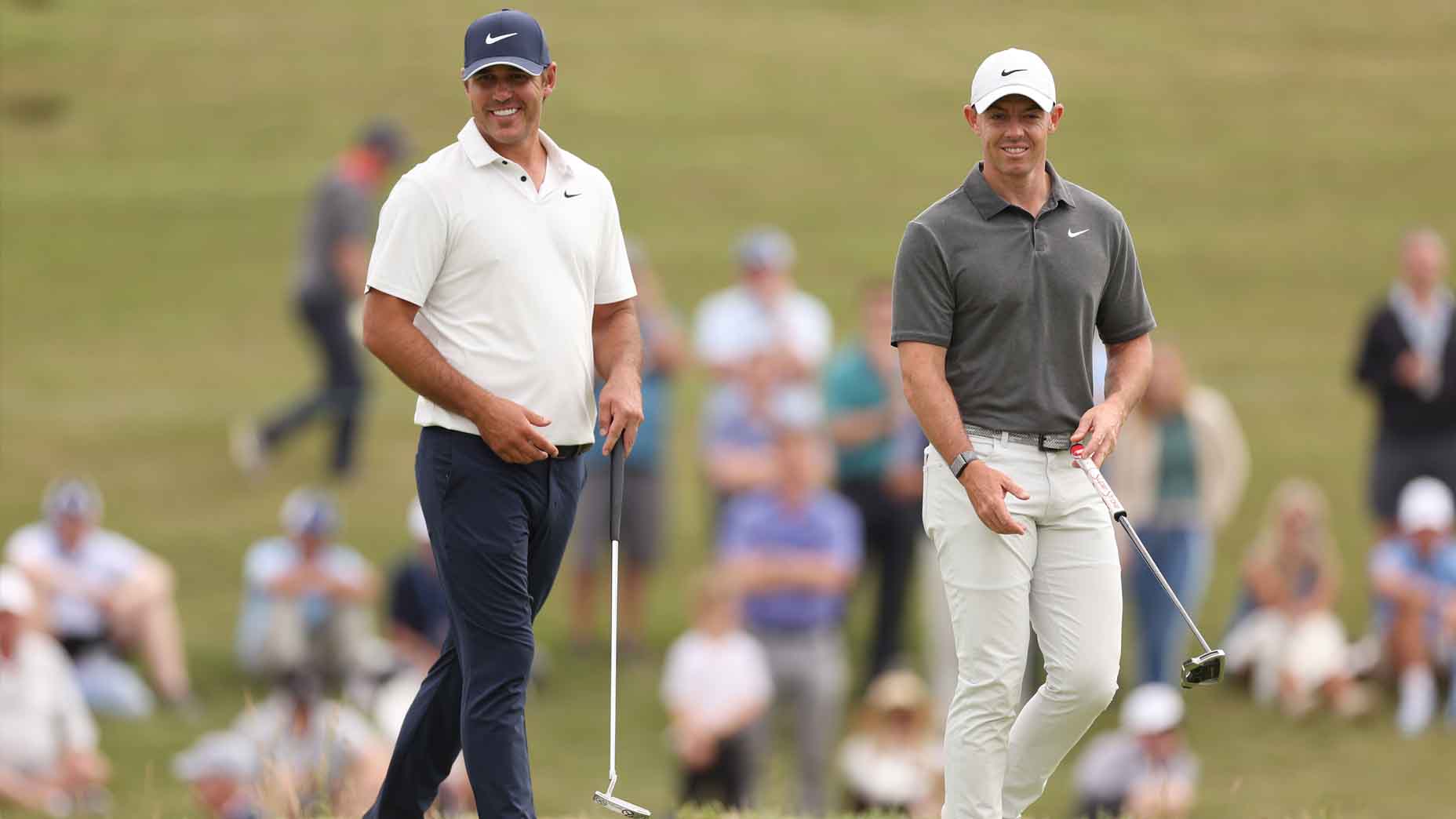For years, winning on the PGA Tour, like Grayson Murray did at the Sony Open on Sunday, has been a simple — and lucrative — business.
The hard part is winning, of course. But once there, players unlock a new degree of job security and earnings potential. The top-line benefits are prodigious: a two-year exemption into the big leagues, an invite to the Masters, a season-opening trip to Maui, and a guaranteed invitation to some of the Tour’s biggest events (the Players Championship, Arnold Palmer Invitational and Memorial Tournament, among others).
Yes, the win-and-in nature of entering the PGA Tour’s elite is big business for those at the top. But as the calendar flips to 2024 and the PGA Tour embarks upon a new way of competitive life, that reality is amplifying more than ever.
Take, for example, Murray’s win on Sunday in Hawaii — an emotional victory that marked his first on the big-T Tour in close to a decade and arrived just weeks after he’d battled through golf’s minor leagues to earn a spot on the Tour’s working class. His win was more than just an inspiring step, it was a moment of career affirmation. With the victory, he would earn the customary Tour exemption (this year plus two more), in addition to entry into the majors and, most notably, the Tour’s new big-money, limited-field signature events series. Entry into those eight signature events, many of which are flush with small fields, no cuts and massive paydays, could be enough to change the course of Murray’s life financially.
In the past, Murray’s victory would have been enough to vault him into all of the Tour’s biggest events under the “current-season tournament winner” exemption category, but now, with smaller field sizes and no cuts at many of the signature events, that category has shifted. The Tour likely couldn’t welcome the winners from each of its 39 events and the previous year’s FedEx Cup top-50 while maintaining an 80-player signature event field — and even if they could do that, there are other field requirements to take into account, like the Swing 5 and Swing 10, that would add more players into the field. (The Swing 5: the top-5 non-signature-event-exempt players in FedEx Cup points from the current schedule “swing”. The Swing 10: the top 10 non-exempt FedEx Cuppers from the whole season.)
As Murray basked in the glow of victory, the realities of the new landscape in professional golf seemed to take shape for the first time. And the PGA Tour sent out a quiet but notable, tweet, explaining how those realities could affect players trying to earn one of a few coveted spots in the signature events without a victory.
“With his win at the Sony Open in Hawaii, Grayson Murray is eligible for all remaining Signature Events in 2024,” the tweet read. “But [he] is counted in the Aon Swing 5 because that is a higher eligibility category than current-season tournament winners in the priority ranking for Signature Events.”
With his win at the Sony Open in Hawaii, Grayson Murray is eligible for all remaining Signature Events in 2024, but is counted in the Aon Swing 5 because that is a higher eligibility category than current-season tournament winners in the priority ranking for Signature Events.
— PGA TOUR Communications (@PGATOURComms) January 15, 2024
So, exemption talk aside, what did the Tour’s announcement mean? It meant that as far as the Tour was concerned, his signature event eligibility was tied more to his FedEx Cup ranking than his performance on Sunday. Sure, the performance on Sunday had helped Murray, guaranteeing him an invitation into each of the signature events. But it was his FedEx Cup ranking, which had been pushed to the top of the Swing 10 and Swing 5, that would be more important in the eyes of the Tour.
There’s an argument to be made that this benefits those in the working class. The Swing 5 and 10 were created, after all, to avoid the “closed system” concerns of many in this group, providing a viable way into the signature events from the lower ranks. Wins will always help boost FedEx Cup rankings, which means it’s possible, if not likely, that we could see a world where a tournament winner could be double-dipping on a spot in two separate exemption categories.
That might sound insignificant, but for those in the Tour’s “working” class (ranked 51-125) hoping for a chance of their own at the signature events’ life-changing money, it represents a notable shift.
Of course, Murray probably won’t mind that shift very much on Monday morning, when he rises $1.42 million richer and in pole position heading into the first few events of the signature event season. But as the golf world prepares for the first season under a new order on the PGA Tour, it’s wise for others on the outside looking in on the Tour’s biggest events to keep an important truth in mind: winning is everything, but it’s no longer the only thing.










